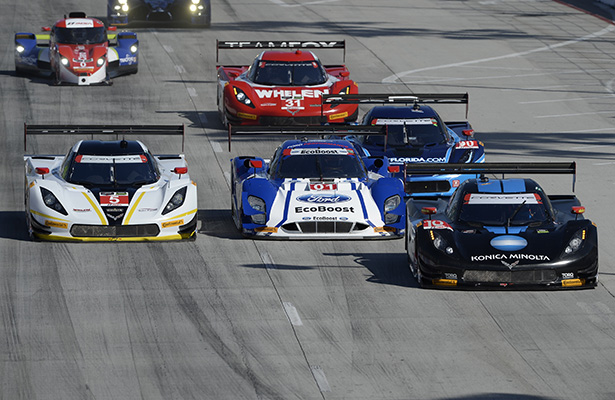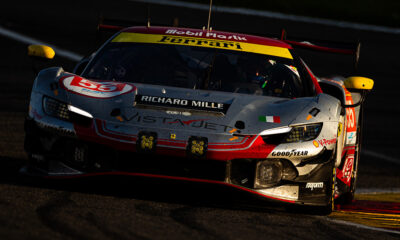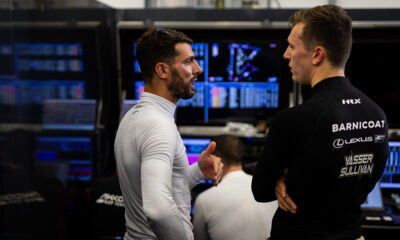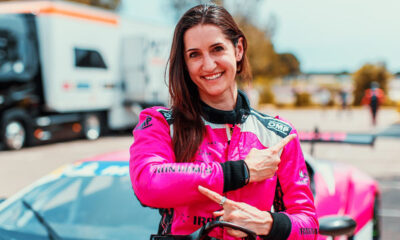
Photo: IMSA
Daytona Prototypes are set to soon be a thing of the past, as IMSA is not expecting the grandfathering of existing Prototype machinery into the new-for-2017 Prototype regulations.
“Directionally, we’re not expecting to grandfather,” IMSA President and COO Scott Atherton told Sportscar365 Friday at Watkins Glen.
“When we break cover in 2017 with the new era of Prototype, I’m not anticipating having grandfathered examples out there.”
DP cars currently make up the majority of the P class grid, and while Atherton admitted there could be exceptions to the grandfathering rule if a compelling reason is made, it would be IMSA’s intention to start the new era with a fresh slate.
“It hasn’t been announced yet,” he said. “But if you spoke to Jim France or Ed Bennett or Simon [Hodgson] or any of the others in our team that’s working through these discussions, I think they would concur that we won’t grandfather.”
Progress continues to be made on the finalization of the regulations, with IMSA having worked with the FIA and ACO over the last two weeks in the selection process of the four LMP2 chassis constructors.
“In the days immediately following [Le Mans], we had the first official gathering of those three entities to review the responses we got from the call of interest that went out,” Atherton said.
“There was then a couple of days off so we could digest the information we received. Then we got back together the following week and went through two days of live interviews with each of the respondents.
“We’re now going through the next step of that process, which will ultimately result in a mid-July decision announcement that will approve the four constructors.”
Atherton has reaffirmed IMSA’s commitment to the global LMP2 regulations, although cars in the TUDOR Championship will have noticeable differences such as multiple engines and manufacturer-specific bodywork.
IMSA held a manufacturers meeting Friday evening to continue discussions on engine and bodywork-specific regulations, which are being formalized with the support of the FIA and ACO.
“The regulations haven’t been finalized,” Atherton said. “That’s still a work-in-progress. But we’re very close to being able to do that.
“We’ve been extracting feedback from both constructors and OEMs, in terms of what free volumes are available and what is not.
“What elements of the car will be untouchable and what elements could be potentially altered to provide that design element the manufacturers want.
“That’s still a work-in-progress but we’re very near the end of that.”


























